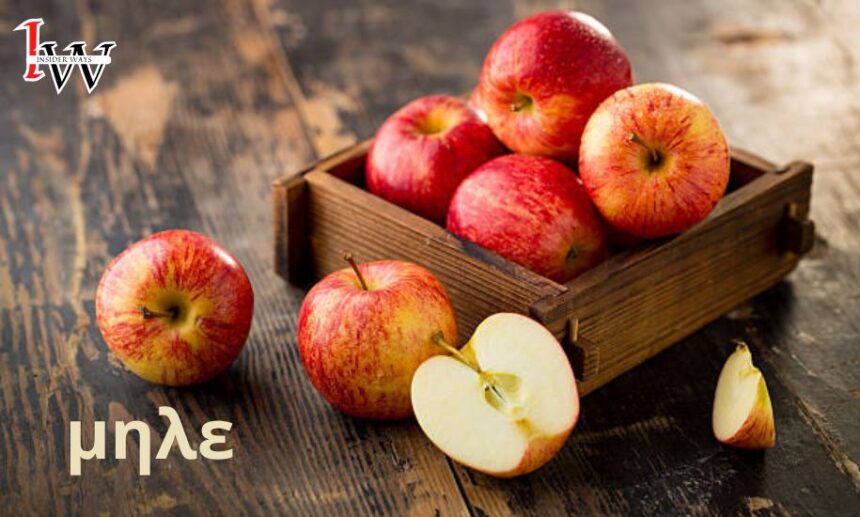The term “μηλε” holds significant historical and cultural importance in Greek history. This article delves into its various aspects, exploring its origins, uses, and the symbolic value it holds in Greek culture.
Origin and History of μηλε
The word “μηλε” is derived from ancient Greek, referring to a type of fruit that was highly valued in ancient times. It is believed to be related to the modern appleor quince, fruits that were commonly grown in ancient Greece. The cultivation of “μηλε” dates back to several centuries, showcasing the Greeks’ advanced agricultural practices. Ancient Greek texts and archaeological findings provide evidence that “μηλε” was not only a staple in their diet but also a significant part of their agricultural economy.
Cultivation and Varieties
In ancient Greece, the cultivation of “μηλε” was a well-practiced art. Farmers would grow different varieties of this fruit, each with its unique taste and properties. The ancient Greeks were adept at grafting and selective breeding, which allowed them to cultivate superior varieties of “μηλε.” Some of the popular varieties included:
- Golden Μηλε: Known for its sweet taste and golden hue, this variety was often reserved for special occasions and offerings to the gods.
- Red Μηλε: Valued for its tartness and vibrant red color, the Red Μηλε was commonly used in culinary preparations.
- Quince Μηλε: A variant that is closer to the modern quince, known for its aromatic flavor and used extensively in making preserves and sweets.
Culinary Uses of Μηλε
The fruit “μηλε” was widely used in ancient Greek cuisine. It was consumed fresh, dried, or used as an ingredient in various dishes. The versatility of “μηλε” made it a popular choice among ancient Greek cooks. Some of the popular culinary uses included:
- Fresh Μηλε: Eaten as a snack or dessert, fresh “μηλε” was enjoyed for its natural sweetness and nutritional benefits. It was often included in feasts and banquets.
- Dried Μηλε: Used in making sweet treats and preserved for off-season consumption, dried “μηλε” provided a long-lasting source of nutrition. The drying process concentrated the fruit’s sweetness, making it a favorite in ancient Greek households.
- Μηλε Pies and Tarts: A common dessert made with a sweet filling of “μηλε” encased in a pastry shell. These were often served at celebratory events and religious festivals, highlighting the fruit’s importance in ancient Greek culture.
Symbolism and Cultural Significance
Beyond its culinary uses, “μηλε” held symbolic value in ancient Greek culture. It was often associated with love, beauty, and immortality. The fruit appeared in numerous myths and legends, symbolizing different virtues:
- Love and Affection: In Greek mythology, the golden “μηλε” given by Paris to Aphrodite symbolized love and beauty. This mythological event, known as the Judgment of Paris, ultimately led to the Trojan War, highlighting the powerful symbolism attached to “μηλε.”
- Immortality: The fruit was often linked to the gods and was considered a symbol of eternal life. For example, in the myth of the Hesperides, golden apples (μηλε) granted immortality to those who consumed them.
- Prosperity and Fertility: “Μηλε” was also a symbol of prosperity and fertility. During ancient Greek weddings, the bride and groom would share a “μηλε” as a symbol of their fruitful union.
Health Benefits of Μηλε
Ancient Greeks also recognized the health benefits of “μηλε.” It was believed to have medicinal properties that could aid in digestion, boost immunity, and provide essential nutrients. Some of the key health benefits include:
- Rich in Vitamins: “Μηλε” is a good source of vitamins A and C, which are essential for maintaining healthy skin and vision, as well as boosting the immune system.
- Antioxidant Properties: The fruit contains antioxidants that help fight free radicals, protecting the body from various diseases and promoting overall health.
- Digestive Aid: Its fiber content aids in digestion and promotes a healthy gut. The pectin in “μηλε” helps regulate bowel movements and can prevent constipation.
Μηλε in Modern Times
The legacy of “μηλε” continues to this day, with modern varieties of apples and quinces being direct descendants of the ancient “μηλε.” Contemporary Greek cuisine still celebrates this fruit, incorporating it into traditional recipes and modern dishes alike. The cultural significance of “μηλε” is preserved through literature, art, and folklore, keeping its rich history alive.
FAQs about Μηλε
What is the origin of the word “μηλε”?
The word “μηλε” is derived from ancient Greek, referring to a type of fruit similar to modern apples or quinces. It holds significant historical and cultural importance, being mentioned in various ancient texts and myths.
How was “μηλε” used in ancient Greek cuisine?
“Μηλε” was consumed fresh, dried, and used in making pies, tarts, and other sweet treats. Its versatility made it a staple in the ancient Greek diet, enjoyed for both its taste and nutritional benefits.
What symbolic meanings are associated with “μηλε” in Greek culture?
“Μηλε” symbolized love, beauty, and immortality in ancient Greek myths and legends. It was also seen as a symbol of prosperity and fertility, playing a significant role in various cultural and religious practices.
What are the health benefits of “μηλε”?
“Μηλε” is rich in vitamins A and C, has antioxidant properties, and aids in digestion due to its high fiber content. These health benefits were recognized by ancient Greeks, who used the fruit for both its nutritional and medicinal properties.
Are there different varieties of “μηλε”?
Yes, ancient Greeks cultivated various varieties such as Golden Μηλε, Red Μηλε, and Quince Μηλε, each with unique taste and properties. These varieties were selectively bred for their desirable characteristics, showcasing the advanced agricultural practices of ancient Greece.
This comprehensive exploration of “μηλε” highlights its rich history, cultural significance, and lasting impact on Greek heritage. The fruit’s journey from ancient times to modern-day is a testament to its enduring legacy.





